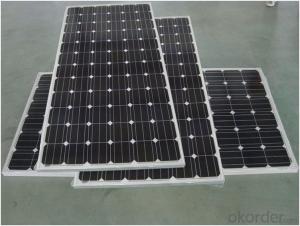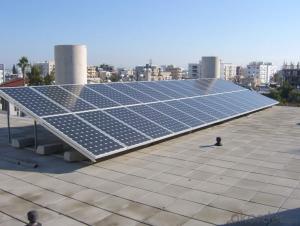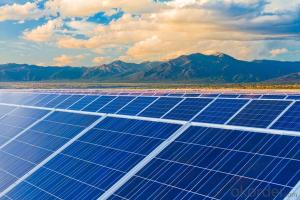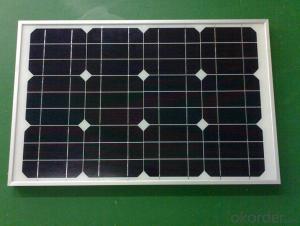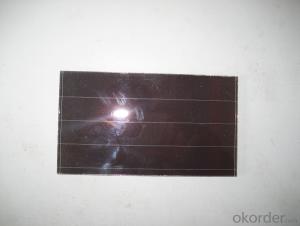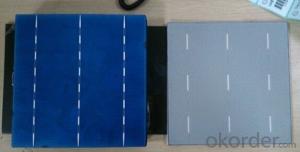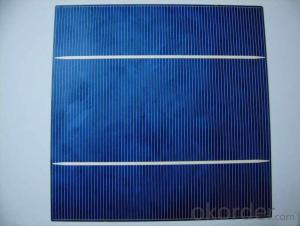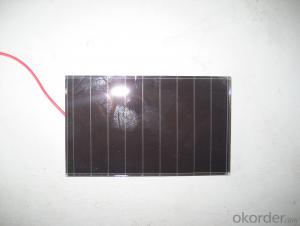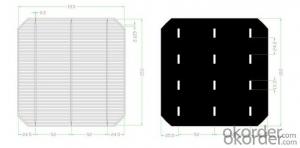Solar Panel System for Home Lighing Solar Panel Kit 10w to 500w
- Loading Port:
- China main port
- Payment Terms:
- TT OR LC
- Min Order Qty:
- 500 watt
- Supply Capability:
- 20000000 watt/month
OKorder Service Pledge
OKorder Financial Service
You Might Also Like
Destription:
Solar panel refers to a panel designed to absorb the sun's rays as a source of energy for generating electricity or heating. A PV module is a packaged, connected assembly of typically 6×10 solar cells. Solar PV panels constitute the solar array of a photovoltaic system that generates and supplies solar electricity in commercial and residential applications.
Main Characteristic
1.Manufactured according to international quality and Environment Management
System (ISO9001, ISO14001)
2. By the high transmittance, low iron tempered glass, anti-aging of the EVA(polyethylene - vinyl acetate), high-performance crystalline silicon solar cells, good Weather resistance TPT (fluoroplastics composite membrane) by pyramid , has a good Weather resistance and anti-UV, hail, water-proof capacity.
3. OEM and customerized package are accepted
4. High efficiency crystalline silicon solar cells
Quality warranty
1.10 years limited warranty on material and workmanship
2. more than 90% power output in 10 years
3. more than 80% power output in 25 years
Product show

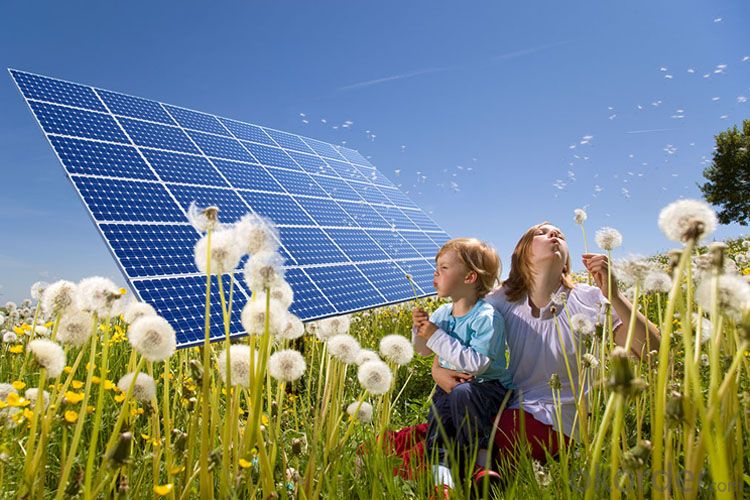
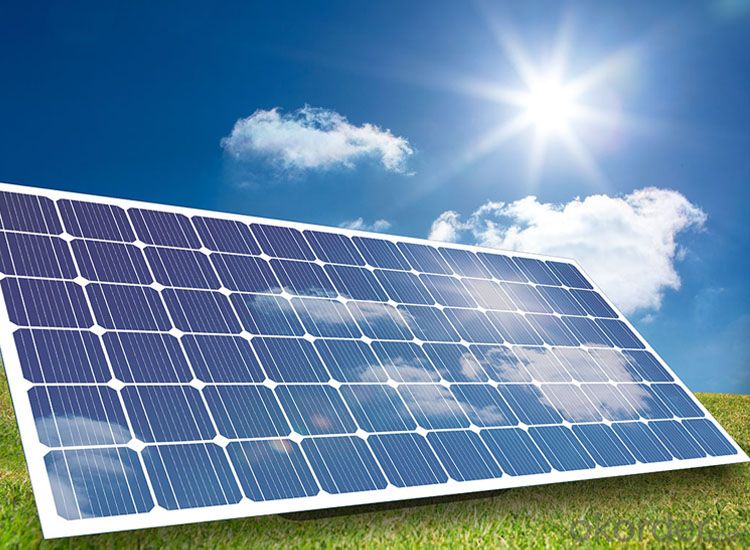


- Q:What is the impact of light-induced degradation on the performance of solar silicon wafers?
- Light-induced degradation refers to the phenomenon where the performance of solar silicon wafers decreases over time due to exposure to sunlight. This degradation primarily affects the efficiency of the solar cells and reduces their power output. It occurs due to the formation of defects and impurities within the silicon material, which reduces the ability of the solar cells to convert sunlight into electricity. To mitigate this impact, manufacturers employ various techniques such as passivation layers or anti-reflective coatings to minimize light-induced degradation and ensure optimal performance of solar silicon wafers.
- Q:Are there any advancements in solar silicon wafer technology on the horizon?
- Yes, there are several advancements in solar silicon wafer technology on the horizon. Researchers and manufacturers are actively working on improving the efficiency and cost-effectiveness of silicon wafer production. Some promising advancements include the development of thinner wafers, novel texturing techniques for increased light absorption, and the integration of advanced materials like perovskite in tandem with silicon wafers to enhance overall energy conversion. These advancements hold great potential for making solar energy more accessible and affordable in the future.
- Q:How does the efficiency of a solar silicon wafer change with wind speed?
- The efficiency of a solar silicon wafer is not directly affected by wind speed. Wind speed does not have a significant impact on the performance or efficiency of a solar silicon wafer as long as it is securely mounted and protected from any potential damage caused by high winds.
- Q:Can solar silicon wafers be used in disaster relief efforts?
- Yes, solar silicon wafers can be used in disaster relief efforts. They can provide a reliable source of renewable energy in areas where the conventional power grid may be damaged or non-existent after a disaster. Solar panels, made with silicon wafers, can generate electricity to power emergency communication systems, medical equipment, lighting, and other essential devices, aiding relief operations and improving living conditions for affected communities.
- Q:How is a solar silicon wafer tested for quality control?
- A solar silicon wafer is tested for quality control through a series of rigorous procedures. These include inspecting the wafer's surface for any defects or impurities, measuring its dimensions and thickness to ensure they meet specifications, and conducting electrical tests to assess its efficiency and performance. Additionally, the wafer may undergo specific tests like resistivity measurement, optical inspection, and thermal imaging to further evaluate its quality and suitability for solar cell production.
- Q:Can solar silicon wafers be used in floating solar panel installations?
- Yes, solar silicon wafers can be used in floating solar panel installations. Floating solar panels typically use photovoltaic cells, which are made of silicon wafers. These wafers are specifically designed to convert sunlight into electricity, making them suitable for floating solar panel systems.
- Q:After cutting a few chips, mortar density is getting lower and lower
- There are a lot of things that could happen1 lubricant is not qualified2 too many bubbles in the recycle bin3 mortar selection4, the operation speed is too fast5 wafer density is not uniform (the lowest possible)Try not to contact
- Q:What is the purpose of a fill factor in a solar silicon wafer?
- The purpose of a fill factor in a solar silicon wafer is to measure the efficiency of the solar cell. It represents the ratio of the maximum power output of the solar cell to the product of the open-circuit voltage and short-circuit current. A higher fill factor indicates a more efficient solar cell, as it signifies a better utilization of the available solar energy.
- Q:P type and N type monocrystalline silicon chip difference?
- The doping of phosphorus in monocrystalline silicon is N type, the more the phosphorus is, the more free electrons, the stronger the conductivity, the lower the resistivity;
- Q:How does the efficiency of a solar silicon wafer change with air pollution?
- The efficiency of a solar silicon wafer tends to decrease with air pollution. Air pollution can deposit particles on the surface of the wafer, reducing the amount of sunlight that can reach the silicon cells. This leads to a decrease in the conversion of sunlight to electricity, resulting in lower efficiency. Additionally, air pollution can also cause the formation of a thin film on the surface of the wafer, which can further reduce the absorption of sunlight and decrease efficiency. Therefore, minimizing air pollution is crucial to maintain and maximize the efficiency of solar silicon wafers.
1. Manufacturer Overview |
|
|---|---|
| Location | |
| Year Established | |
| Annual Output Value | |
| Main Markets | |
| Company Certifications | |
2. Manufacturer Certificates |
|
|---|---|
| a) Certification Name | |
| Range | |
| Reference | |
| Validity Period | |
3. Manufacturer Capability |
|
|---|---|
| a)Trade Capacity | |
| Nearest Port | |
| Export Percentage | |
| No.of Employees in Trade Department | |
| Language Spoken: | |
| b)Factory Information | |
| Factory Size: | |
| No. of Production Lines | |
| Contract Manufacturing | |
| Product Price Range | |
Send your message to us
Solar Panel System for Home Lighing Solar Panel Kit 10w to 500w
- Loading Port:
- China main port
- Payment Terms:
- TT OR LC
- Min Order Qty:
- 500 watt
- Supply Capability:
- 20000000 watt/month
OKorder Service Pledge
OKorder Financial Service
Similar products
New products
Hot products
Related keywords
